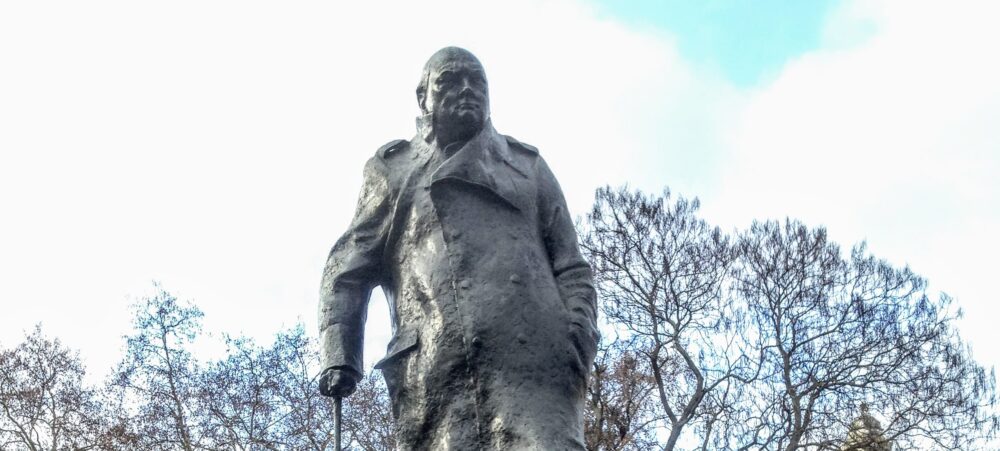
WHAT: Statue of Sir Winston Churchill
WHERE: Parliament Square (map)
BY WHOM: Ivor Roberts-Jones
WHEN: 1973
It is said that when plans were drawn up to remodel Parliament Square in 1950, Churchill is meant to have drawn a circle on the north eastern corner and said “that is where my statue will go”.
Whatever the truth of that (and, as with a lot of what is ascribed to Churchill, myth overtakes evidence), this 12ft (3.66m) bronze statue was unveiled in 1973 by Churchill’s widow, Clementine. The Queen declined to unveil the work, feeling that the honour had to to ‘Darling Clemmie’ (or, according to some sources, that a monarch should not be unveiling a statue to a subject), although she did give a speech. Also present were the Queen Mother, the then Prime Minister Edward Heath, all four living ex-PMs and four generations of the Churchill family.
The sculptor was welshman Ivor Roberts-Jones, an associate of the Royal Academy (he would become a Royal Academician in 1973, the year of the statue’s unveiling) and head of the sculpture department at Goldsmiths College.
The process of sculpting the image was not without argument. The chair of the statue committee reported back after seeing Roberts-Jones plaster cast of the work: “At the moment the head is undoubtedly like Churchill, but … the cheeks, the eyes, the forehead and the top of the head require improvement. I told Mr. Roberts-Jones that above the eyes I thought I was looking at Mussolini.” Amendments were made. The plinth bears simply the word ‘Churchill’ – no dates, no other names.
The figure is wearing a naval greatcoat and leaning on a stick, said to be based on his demeanour when inspecting the Chamber of the House of Commons after it had been gutted in a German air raid in April 1941. I always find it a little strange that his gaze seems to be directed towards Westminster Bridge rather than to Parliament itself. Churchill was an MP for over 60 years (1900-1964, although 1922-24 he was without a seat) and, in fact, turned down a Dukedom (he would have been the ‘Duke of London’) so that he could remain in the Commons.
The tale is often told that the statue is electrified to stop pigeons from, er, alighting on Churchill’s head, but this is, unfortunately, a London myth. As well as not being pigeon-repellant, the statue has become a focus for protests in recent years, so much so that it is now frequently boarded up when marches are planned. As Churchill seems to move from being an historical figure to being an ‘icon’, it becomes harder for many to see him as a rounded character, with strengths, weaknesses, achievements, failures, problematic opinions and utterances, and all the baggage that comes with being human; the manichean view divides the world into heroes and villains, forgetting that people can be both.

